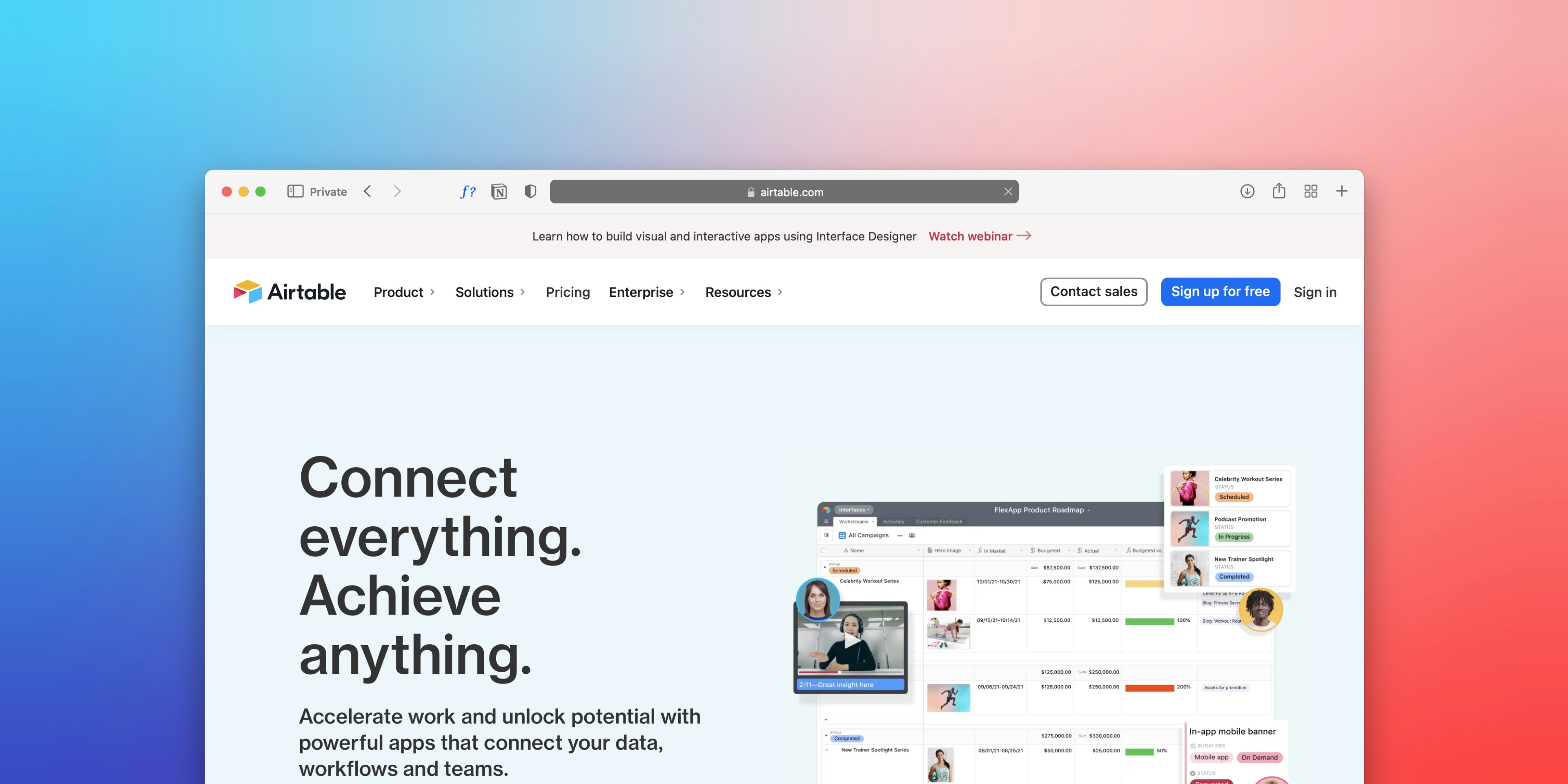-p-2000.png)


Top 8 Amazing Benefits of Low-Code, No-Code Development

The world of software development is constantly evolving, and with the rise of low-code and no-code platforms, developers are finding new ways to create innovative solutions. These platforms offer a simpler and more efficient way to create software applications without the need for extensive coding knowledge.
In this article, we will be exploring the benefits of low-code and no-code development to help businesses and developers understand the advantages of implementing them in their workflow.
Whether you're an experienced developer or a business owner seeking to streamline your development process, keep scrolling to discover the advantages of using these development approaches and why they are becoming increasingly popular in the business world.
What is No-Code Development?
No-code development is a revolutionary way of creating applications without requiring any coding expertise.
One of the most popular no-code development platforms is Airtable. With its drag-and-drop interface and intuitive features, users can quickly build databases, automate workflows, and create custom applications.
The benefits of no-code development platforms go beyond their user-friendly interface. It also allows for faster and more efficient application development, reducing costs and increasing productivity.
By eliminating the need for extensive coding knowledge, no-code platforms like Airtable open up new opportunities for businesses and developers, making software development more accessible and innovative.
What is Low-Code Development?
Low-code development simplifies software development by enabling users to create applications with minimal coding. Developers use pre-built blocks of code on low-code platforms to build applications, reducing the amount of time required for coding.
Two popular examples of low-code development platforms are Salesforce Lightning and Microsoft PowerApps.
The benefits of low-code development are numerous. This approach can speed up the application development process while making it less complex and time-consuming, providing a more efficient way to develop applications.
With low-code development, businesses can quickly create and deploy applications, reducing costs and boosting productivity.
Moreover, low-code platforms offer a more intuitive user interface, making it easier for non-technical individuals to create applications. This allows businesses to train employees faster and more efficiently, enabling them to create their own applications without the need for extensive coding knowledge or experience.
No-Code vs. Low-Code: What's the Difference?
No-code and low-code development platforms are often used interchangeably, but there are still a few key differences between the two.
No-code platforms are perfect for business users or individuals without coding experience. These platforms offer a simple drag-and-drop interface allowing users to create applications without writing code.
On the other hand, low-code development platforms require some coding experience but not as much as traditional development. They provide a more visual approach to coding, utilizing pre-built blocks of code that developers can easily drag and drop to create applications. This approach allows developers to focus on the more complex aspects of application development rather than wasting time on basic coding tasks.
Reach out to our no-code experts!
Get in touchKey Benefits of No-Code and Low-Code Development
Now that we understand the differences between no-code and low-code development better let's explore some of the key benefits that businesses and developers can reap from using these platforms.
1. Faster Application Development
No-code and low-code platforms provide developers with an efficient way to create applications, leading to a faster time-to-market for new products. With pre-built blocks of code and a visual approach to coding, developers can focus on the more complex aspects of app functionality and design.
This increased productivity leads to cost savings and higher ROI for businesses, making both no-code and low-code development an attractive option for those seeking to streamline their development process.
2. Lower Costs
Cost-effectiveness is another significant benefit of low-code and no-code development platforms. They provide a budget-friendly solution for businesses looking to streamline their development process and increase productivity. With these platforms, non-technical users can create applications without hiring expensive developers, resulting in significant cost savings.
In addition, they provide a user-friendly approach to application development, allowing businesses to focus on innovation and creativity while saving time and resources.
3. Simplified Development Process
These platforms also offer a simplified and streamlined approach to application development, making the process less complex. This, in turn, reduces the time and costs associated with development, allowing businesses to achieve their goals more efficiently.
These platforms increase productivity and foster innovation by enabling developers to focus on the more complex aspects of development.
4. Increased Efficiency
Both low-code and no-code development platforms provide a streamlined approach to software development with pre-built code blocks and a visual interface. This significantly reduces coding time, allowing developers to focus on complex tasks. The result is increased efficiency and productivity for businesses, achieving software development goals faster.
5. Greater Flexibility
Flexibility is another key benefit of using low-code and no-code platforms, making them highly preferred among businesses and developers.
These platforms allow for easy modifications and adjustments to applications, saving time and effort while also enabling businesses to adapt to changing needs and requirements more quickly.
6. Improved Collaboration
Both low-code and no-code development provide collaboration benefits, enabling developers and business users to work together more efficiently. By using a visual interface and pre-built blocks of code, team members can communicate more effectively, reducing the time required for communication and ensuring better coordination.
7. Reduced Dependency
Another key benefit of low-code and no-code platforms is that they empower businesses to make quick changes to their applications, reducing their reliance on developers. With pre-built blocks of code, even non-technical users can easily create applications, saving time and increasing productivity for the organization.
8. Faster Learning Curve
Last but not least, low-code and no-code platforms have a shorter learning curve, making it easier for businesses to train their employees quickly and efficiently. This benefit not only saves time and resources but also allows organizations to develop custom solutions in-house, reducing their dependence on external developers.
If you're looking to build a No-code SaaS MVP, check out this article on the Best No-Code Tools to Build a SaaS MVP Without Coding.
Conclusion
Low-code and no-code development offer incredible benefits to businesses of all sizes. From increased efficiency and flexibility to faster time-to-market, these platforms are revolutionizing the way we approach software development.
Additionally, they provide an opportunity for non-technical employees to contribute in meaningful ways and bridge the gap between IT and other departments.
As the demand for digital solutions continues to grow, low-code and no-code development will undoubtedly become even more critical in helping organizations stay competitive. So why not explore these platforms today and take advantage of their many benefits? Your business could be just a few clicks away from its next great innovation.

Reach out to our no-code experts!
Get in touchFAQ
Editorial Team
Publisher
The world of software development is constantly evolving, and with the rise of low-code and no-code platforms, developers are finding new ways to create innovative solutions. These platforms offer a simpler and more efficient way to create software applications without the need for extensive coding knowledge.
In this article, we will be exploring the benefits of low-code and no-code development to help businesses and developers understand the advantages of implementing them in their workflow.
Whether you're an experienced developer or a business owner seeking to streamline your development process, keep scrolling to discover the advantages of using these development approaches and why they are becoming increasingly popular in the business world.
What is No-Code Development?
No-code development is a revolutionary way of creating applications without requiring any coding expertise.
One of the most popular no-code development platforms is Airtable. With its drag-and-drop interface and intuitive features, users can quickly build databases, automate workflows, and create custom applications.
The benefits of no-code development platforms go beyond their user-friendly interface. It also allows for faster and more efficient application development, reducing costs and increasing productivity.
By eliminating the need for extensive coding knowledge, no-code platforms like Airtable open up new opportunities for businesses and developers, making software development more accessible and innovative.
What is Low-Code Development?
Low-code development simplifies software development by enabling users to create applications with minimal coding. Developers use pre-built blocks of code on low-code platforms to build applications, reducing the amount of time required for coding.
Two popular examples of low-code development platforms are Salesforce Lightning and Microsoft PowerApps.
The benefits of low-code development are numerous. This approach can speed up the application development process while making it less complex and time-consuming, providing a more efficient way to develop applications.
With low-code development, businesses can quickly create and deploy applications, reducing costs and boosting productivity.
Moreover, low-code platforms offer a more intuitive user interface, making it easier for non-technical individuals to create applications. This allows businesses to train employees faster and more efficiently, enabling them to create their own applications without the need for extensive coding knowledge or experience.
No-Code vs. Low-Code: What's the Difference?
No-code and low-code development platforms are often used interchangeably, but there are still a few key differences between the two.
No-code platforms are perfect for business users or individuals without coding experience. These platforms offer a simple drag-and-drop interface allowing users to create applications without writing code.
On the other hand, low-code development platforms require some coding experience but not as much as traditional development. They provide a more visual approach to coding, utilizing pre-built blocks of code that developers can easily drag and drop to create applications. This approach allows developers to focus on the more complex aspects of application development rather than wasting time on basic coding tasks.
Reach out to our no-code experts!
Get in touchKey Benefits of No-Code and Low-Code Development
Now that we understand the differences between no-code and low-code development better let's explore some of the key benefits that businesses and developers can reap from using these platforms.
1. Faster Application Development
No-code and low-code platforms provide developers with an efficient way to create applications, leading to a faster time-to-market for new products. With pre-built blocks of code and a visual approach to coding, developers can focus on the more complex aspects of app functionality and design.
This increased productivity leads to cost savings and higher ROI for businesses, making both no-code and low-code development an attractive option for those seeking to streamline their development process.
2. Lower Costs
Cost-effectiveness is another significant benefit of low-code and no-code development platforms. They provide a budget-friendly solution for businesses looking to streamline their development process and increase productivity. With these platforms, non-technical users can create applications without hiring expensive developers, resulting in significant cost savings.
In addition, they provide a user-friendly approach to application development, allowing businesses to focus on innovation and creativity while saving time and resources.
3. Simplified Development Process
These platforms also offer a simplified and streamlined approach to application development, making the process less complex. This, in turn, reduces the time and costs associated with development, allowing businesses to achieve their goals more efficiently.
These platforms increase productivity and foster innovation by enabling developers to focus on the more complex aspects of development.
4. Increased Efficiency
Both low-code and no-code development platforms provide a streamlined approach to software development with pre-built code blocks and a visual interface. This significantly reduces coding time, allowing developers to focus on complex tasks. The result is increased efficiency and productivity for businesses, achieving software development goals faster.
5. Greater Flexibility
Flexibility is another key benefit of using low-code and no-code platforms, making them highly preferred among businesses and developers.
These platforms allow for easy modifications and adjustments to applications, saving time and effort while also enabling businesses to adapt to changing needs and requirements more quickly.
6. Improved Collaboration
Both low-code and no-code development provide collaboration benefits, enabling developers and business users to work together more efficiently. By using a visual interface and pre-built blocks of code, team members can communicate more effectively, reducing the time required for communication and ensuring better coordination.
7. Reduced Dependency
Another key benefit of low-code and no-code platforms is that they empower businesses to make quick changes to their applications, reducing their reliance on developers. With pre-built blocks of code, even non-technical users can easily create applications, saving time and increasing productivity for the organization.
8. Faster Learning Curve
Last but not least, low-code and no-code platforms have a shorter learning curve, making it easier for businesses to train their employees quickly and efficiently. This benefit not only saves time and resources but also allows organizations to develop custom solutions in-house, reducing their dependence on external developers.
If you're looking to build a No-code SaaS MVP, check out this article on the Best No-Code Tools to Build a SaaS MVP Without Coding.
Conclusion
Low-code and no-code development offer incredible benefits to businesses of all sizes. From increased efficiency and flexibility to faster time-to-market, these platforms are revolutionizing the way we approach software development.
Additionally, they provide an opportunity for non-technical employees to contribute in meaningful ways and bridge the gap between IT and other departments.
As the demand for digital solutions continues to grow, low-code and no-code development will undoubtedly become even more critical in helping organizations stay competitive. So why not explore these platforms today and take advantage of their many benefits? Your business could be just a few clicks away from its next great innovation.
FAQ
Editorial Team
Publisher




Hi, I'm Mike!
If you are enjoying the article, feel free to subscribe to our monthly newsletter.
If you have any project requirements, please contact us.







.png)









